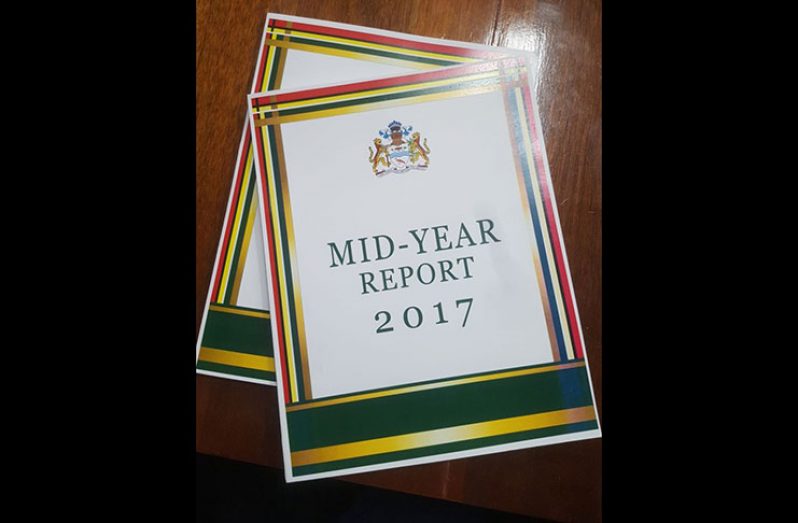-economy grew by 2.2% in first half of 2017
DESPITE recording a deficit in its balance of payment for the first half of 2017, Guyana’s economy grew by 2.2 percent – 0.2 percent more than the same period last year.
This was highlighted in the Ministry of Finance’s 2017 Mid-year report which was tabled in the National Assembly on Friday by Finance Minister, Winston Jordan.
According to the report, this growth was driven by expansion in the agriculture, fishing, and forestry, manufacturing, construction, and services sectors. The report explains that growth in the agriculture, fishing, and forestry sectors was led by expansion in the rice and fishing industries, attributable to favourable international prices, strong demand, and entry into new markets. It was highlighted too that the agriculture, fishing, and forestry sector grew by 6.4 percent, in the first half of this year, underpinned by a “strong recovery” in the rice industry and improved performance in the fishing industry.
Earlier this year Guyana was able to have its rice access Mexican markets, while shipments are expected to be made to Cuba later this year. In relation to the Public Sector Investment Programme (PSIP), which is financed by both local and foreign funded sources, $15.8B was expended during the first half of 2017. This reflected a 19.8 percent increase over the first half of 2016. Further, this represents only 27.9 percent of the PSIP’s budgeted allocation of $56.8B.
The report stated that the locally-funded projects were primarily constrained by delays in the project implementation as a result of a dearth of procurement planning, apparent lack of capacity, and delays in the tender process. As such, this resulted in only 26.8 percent of the budgetary allocation of $34.6B expended at half year. In the area of balance of payments, the country did not do so well. Balance of payments is the record of all international financial transactions made by a country’s residents.
The report states that the overall balance of payments recorded a deficit of US$46M in the first half of 2017, compared to a surplus of US$12M for the same period last year.
According to the Finance Ministry, this “unfavourable” current account position was due to a higher trade deficit in merchandise and services. The report explains that this was caused mainly by an increase in the value of imports. On the other hand, the capital account improved to a surplus of US$35M, from a deficit of US$31M in 2016, largely due to an increase in private capital.
Meanwhile, the report described Guyana’s total public debt as having remained sustainable as a result of a debt management strategy that seeks to raise the required financing and meet debt service obligations at the lowest possible cost. At the end of June 2017, Guyana’s total public debt amounted to US$1.6B, representing an increase of 5.5 percent compared to the 2016 half year position. The report explains that of the total public debt, external debt amounted to US$1.2B or 73.3 percent, while domestic debt was US$437M or 26.7 percent. This reflected a marginal increase in both external and domestic debt. “Guyana’s total public debt declined over the period 2012 to 2016. This steady decline was due to the reduction in debt to Venezuela and lower levels of disbursements from Guyana’s external creditors. Total public debt increased in 2017 as a result of increased disbursements from external creditors and the inclusion of the debt of Atlantic Hotel Incorporated Loan to Republic Bank Limited (Trinidad and Tobago), which was transferred to the books of the Central Government” the report revealed.




.png)









